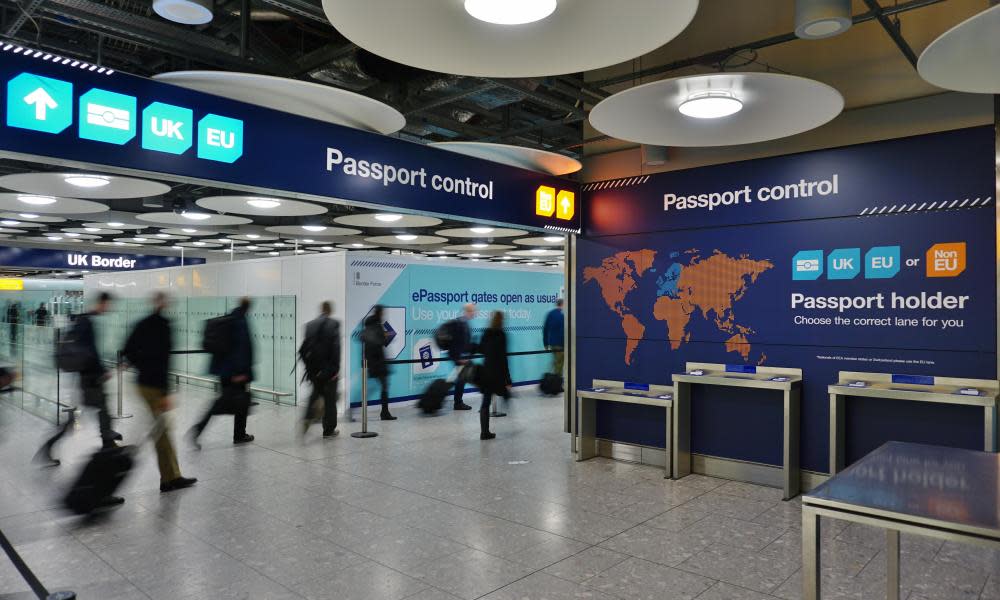Covid: how have UK border controls compared with other countries'?

Just 10 days before the first Covid-19 lockdown in March last year, the UK abandoned a short-lived policy of asking arrivals from high-risk overseas locations to quarantine.
While other countries introduced stricter travel curbs to combat the pandemic, for nearly three months until early June Downing Street did not opt to implement border measures. It was, according to a damning report by MPs published last year, a “highly unusual” approach.
So what did other places do to tighten travel restrictions?
South Korea
The Commons’ home affairs committee report in August, which looked at the government’s management of border controls, also noted the response of some other countries including South Korea. MPs referenced how the country started screening and quarantining arrivals from Wuhan, the centre of the coronavirus outbreak in China, from 3 January. By the end of January, the report noted, South Korea had established 288 screening clinics offering tests, as well as requiring arrivals from China to quarantine.
In a section highlighting other countries’ approaches when the UK introduced border restrictions in June, the report stated that all arrivals, regardless of length of stay or nationality, were required to be tested and undergo quarantine in South Korea. The report further detailed: “Asymptomatic arrivals from the US and Europe must receive a test within three days and must quarantine at a government-designated facility for 14 days on arrival, for which they are required to pay a daily charge of around 100,000KRW (£66). Those who test positive will be isolated and treated at a hospital or community treatment centre.”
New Zealand
New Zealand, which has won praise for its response to the pandemic, closed its borders on 3 February to foreign nationals travelling from China. On 15 March, Jacinda Ardern’s government introduced a mandatory 14-day quarantine for all arrivals, including its citizens, followed by a complete border closure to non-residents five days later, although there were some exceptions, the MPs’ report said. While New Zealand lifted domestic restrictions on its people at midnight on 9 June, the report noted in August: “It still enforces rigorous border restrictions.”
Singapore
Singapore began to require a two-week quarantine for all symptomatic arrivals from China on 22 January last year, the MPs’ report said. In a tightening of measures, a week later the city state started to temperature check all incoming flights, as well as denying entry to all arrivals from Hubei province, China. The measures were extended on 1 February to deny entry to anybody who had been in China in the previous 14 days. Meanwhile, on 15 March – two days after the UK dropped its quarantine policy for international arrivals – Singapore banned arrivals from Italy, France, Spain and Germany, as well as requiring arrivals from the UK, Switzerland and Asean (Association of Southeast Asian Nations) countries to self-isolate for 14 days. Only those with Singaporean residency or citizenship were permitted into the country, the MPs’ report noted.
Canada
On 14 March , Canada advised against all international travel, as well as advising arrivals to self-isolate for two weeks, the MPs’ report said. Justin Trudeau’s government made the move compulsory from 26 March under a new law. Eight days earlier, on 18 March, international arrivals were banned apart from returning Canadian residents, the report explained, and the land border with the United States was restricted two days later to key workers and family members.

 Yahoo News
Yahoo News 
